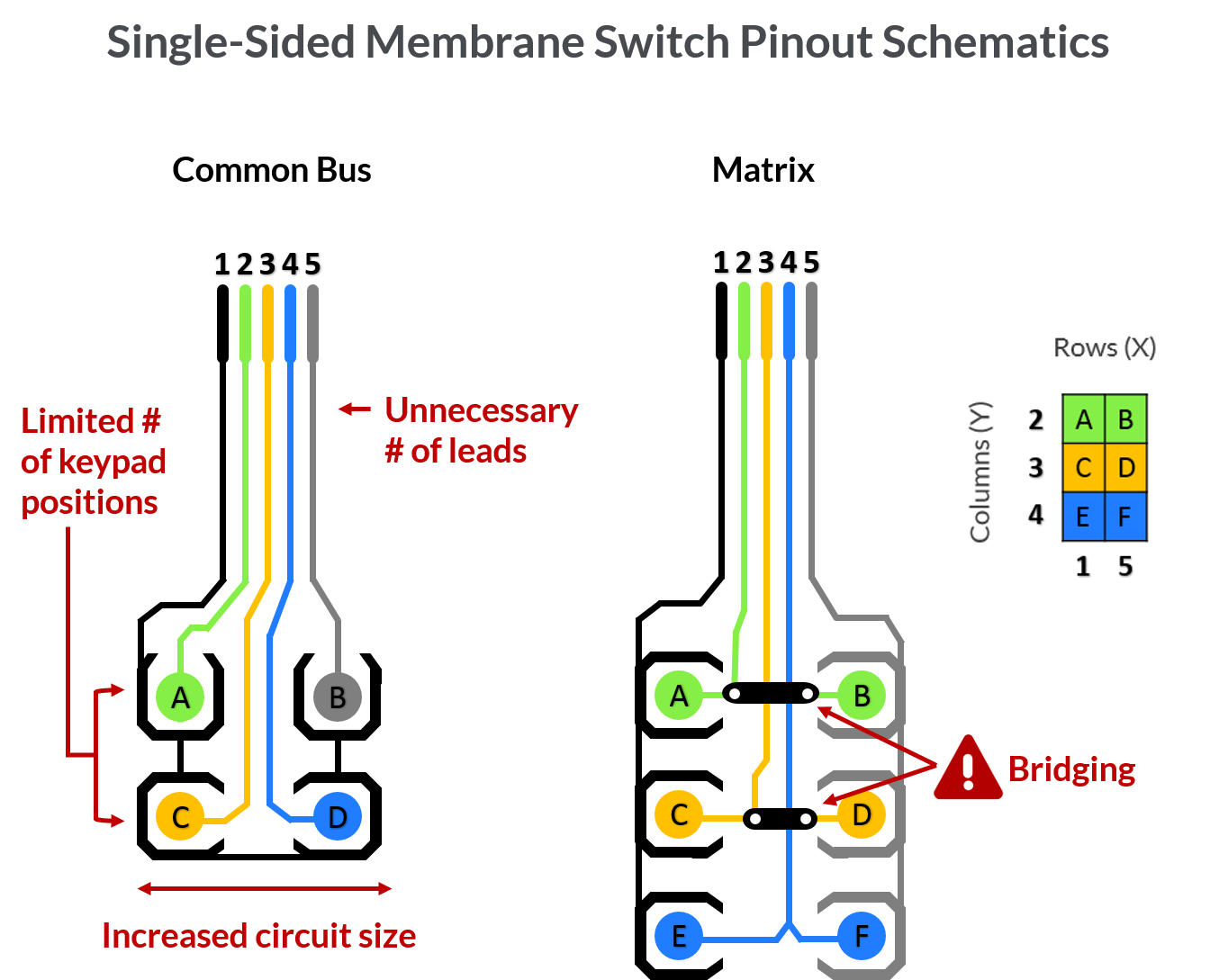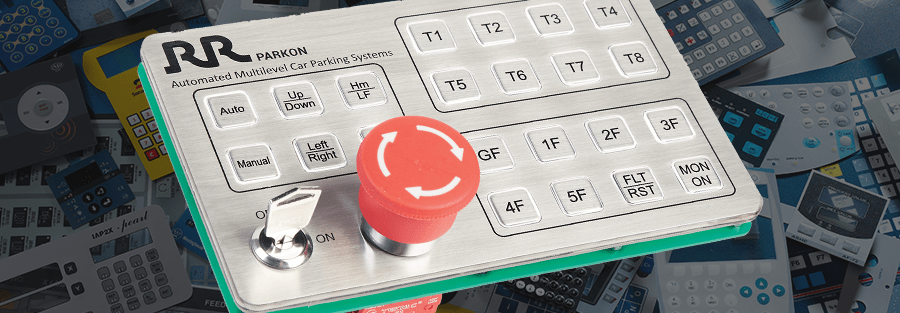How Membrane Switches Boost Performance in Industrial and Customer Applications
The Ultimate Source on Membrane Layer Changes: Layout, Capability, and Applications
Membrane layer switches over serve as a fascinating crossway of style and performance, playing a critical function in modern user interfaces across numerous markets. As we check out the diverse applications of membrane layer buttons, it ends up being evident that their versatility and toughness are important in atmospheres ranging from medical care to customer electronics.

Comprehending Membrane Layer Switches
Membrane layer switches are a kind of customer interface innovation widely made use of in various digital devices, identified by their thin, adaptable design and performance. These buttons contain numerous layers that include graphic overlays, glue layers, and circuitry, allowing a effective and portable interface for individuals. They can be located in appliances, medical gadgets, and commercial control panels, offering a dependable technique for customer interaction.
One of the main benefits of membrane layer switches is their capability to withstand impurities such as dust and moisture, making them appropriate for settings where durability is necessary. Their inconspicuous layout enables seamless combination into various applications, while the personalized visuals overlays enhance user experience by offering clear visual comments. Furthermore, membrane layer buttons can suit a variety of technologies, such as responsive comments and backlighting, further boosting their usability.
The production procedure for membrane switches usually includes screen lamination, die-cutting, and printing strategies, making certain precision and uniformity in manufacturing. Generally, membrane switches stand for a flexible and efficient option for contemporary digital tools, integrating functionality with visual charm in interface layout.
Secret Components and Layout Aspects
A variety of crucial elements and layout aspects collaborated to develop an effective membrane layer switch. At the core, the visuals overlay serves both aesthetic and practical purposes, supplying a straightforward interface while shielding interior parts from environmental variables. The option of materials, normally polyester or polycarbonate, influences durability and responsive feedback.
Underneath the overlay, the adhesive layer makes sure the button adheres firmly to the substrate, which can be steel, plastic, or glass. The spacer layer is important, as it preserves the essential gap in between the overlay and the circuit layers, permitting reliable actuation. Membrane Switches. Circuit traces, typically made from conductive ink or adhesive, are published on an adaptable substrate, allowing electric signals to be sent when stress is applied
Style factors to consider additionally include the plan of tactile domes or embossing that supply physical responses to the user, improving the general experience. In addition, the format and spacing of the switches must be enhanced for simplicity of usage, making certain that users can navigate the interface without effort. On the whole, these parts and design elements work synergistically to create a trustworthy, useful membrane layer button customized to details applications.
Capability and Procedure Device
At the heart of effective functionality for membrane switches exists their functional device, which facilitates user communication via a simple yet reliable layout. These buttons run on the concept of pressure activation, where an individual applies force to a designated location of the button (Membrane Switches). This activity compresses the layers of the switch, finishing an electric circuit that sends out a signal to the linked gadget
The building usually includes a top graphic layer, a sticky spacer layer, and a bottom circuit layer, which collectively create a durable interface. When pressure is used, the leading layer breaks down against the lower circuit layer, enabling conductive traces to link. This design not just allows clear tactile responses however likewise ensures resilience and reliability, as the buttons are typically resistant to dirt and wetness.
Moreover, the convenience of membrane layer switches permits combination with various modern technologies, including LED indications and microcontrollers, improving their functionality. By giving a streamlined user interface that reduces mechanical wear, membrane layer changes continue to be a preferred choice in applications varying from consumer electronic devices to industrial tools, guaranteeing optimum performance and customer contentment across varied environments.
Kinds Of Membrane Buttons

One more considerable group is brightened membrane layer switches, which incorporate backlighting to enhance exposure in pop over to this site low-light conditions. These switches are usually utilized in control panels and dashboards where clear visibility is vital.
Moreover, there are custom-made membrane layer switches designed to satisfy certain dimensional, visual, and useful needs. These modifications can consist of one-of-a-kind forms, shades, and formats, allowing for seamless integration into various tools.

Applications Throughout Different Industries
How do membrane layer switches boost performance throughout diverse sectors? In the medical field, membrane buttons play a vital role in devices such as diagnostic equipment and patient tracking systems, where reliability and convenience of cleaning are vital.
In the automotive market, membrane layer switches are generally utilized in control panels and control board, offering instinctive controls that enhance motorist safety and security and benefit. The customer electronic devices industry likewise gains from their lightweight and adjustable functions, enabling sleek styles for smart devices and home devices.
Furthermore, membrane buttons locate applications in industrial automation, where they contribute to effective equipment procedure and surveillance systems. Their resistance to dust and wetness makes sure capability in demanding conditions (Membrane Switches). Additionally, the food and beverage market utilizes membrane layer buttons for pop over here tools control, where hygiene and sturdiness are essential
Conclusion
In verdict, membrane switches represent an important development in customer interface modern technology, identified by their distinct design and capability. The flexibility of membrane changes promotes their application throughout diverse sectors, from clinical gadgets to customer electronics.
Membrane layer switches offer as an appealing intersection of style and capability, playing an essential role in modern-day user interfaces across different sectors.Membrane buttons are a kind of customer interface modern technology widely utilized in different electronic tools, identified by their slim, versatile style and performance.At the heart of effective functionality for membrane layer switches exists their functional device, which promotes user interaction via an easy yet effective layout. These buttons operate on the principle of stress activation, where a customer applies pressure to a designated location of the button.In conclusion, membrane changes stand for a critical innovation in user interface technology, defined by their unique layout and performance.